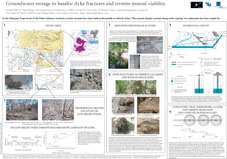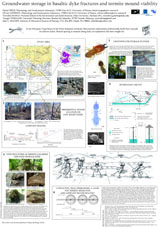
Daniel MEGE
RESEARCH













Survival strategy of Macrotermes subhyalinus on hard rock and fracture porosity aquifers
This work has been presented in February 2010 as a poster at the 6th International Dyke Conference, Varanasi.
An update (including a new cartoon by the mythical John Holden!) was presented in October 2010 at the French Annual Meeting of Earth Sciences in Bordeaux.
The geology of termite mounds has become famous in ore
exploration, especially for retrieving Ag, Au, Cr, Cu, Mn, Mo, Ni, Pb,
and Zn. In contrast, despite the strong dependency of termites on moisture
conditions (termite mounds maintain a humidity of 95%), the relationships
between termite settlement and groundwater have been scarcely inverstigated.
It is known, however, that some species are able to drill galleries tens
of meters deep to find moisture. This requires, however, that the soil
is thick enough, or the geological formation at surface is soft enough
because termites cannot drill into hard rock.
In the Ethio-Sudanese lowlands of northwestern Ethiopia, the soil is usually
a regosol developing on subhorizontal lava flows. The lava flows are not
much fractured in the vertical direction, but are intruded by hundreds
of dolerite and basaltic dykes, in which fracturing is pervasive. Some
termite mounds are located close to narrow rivers that are dry or almost
dry during many months of the year, all the others are located along the
dykes. In Ocotber 2010 the termite species was identified by Olivier Jaffrezic
as Macrotermes subhyalinus on the ground of a series of characters,
especially soldier's mandible morphology.
Field work carried out in the Qwara district of in January
2008 along one of these dykes has shown that it displays mounds only if
the dyke topography does not exceed 2 m. It has also revealed that the
mounds are periodically spaced along the dyke (Figure 1). Field work carried
out along other dykes in October 2009 has confirmed the latter observation.
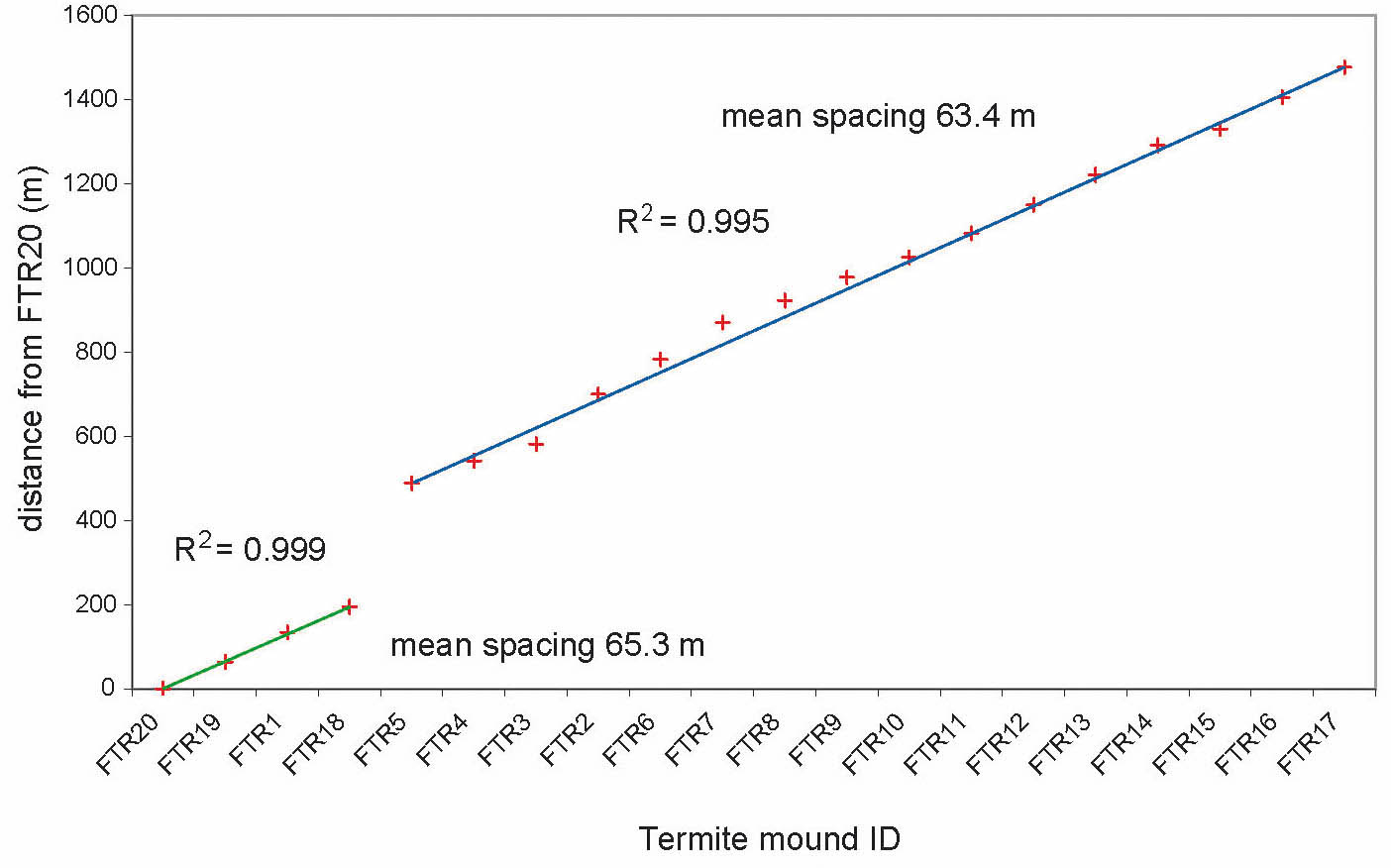
Figure
1: Termite mound distribution along a dyke near the village of
Farshewa, Qwara district, northwestern Ethiopia. Many mounds are helpful
in the identification of dykes that would not be identified by other means
due to poor exposure. The mounds are periodically spaced, on average every
63 m (R2=0.995).
A hydrologic circuit has been proposed to account for the preferential location of termite mounds along the dykes and the dependence of their distribution on dyke topography (Fig. 2).
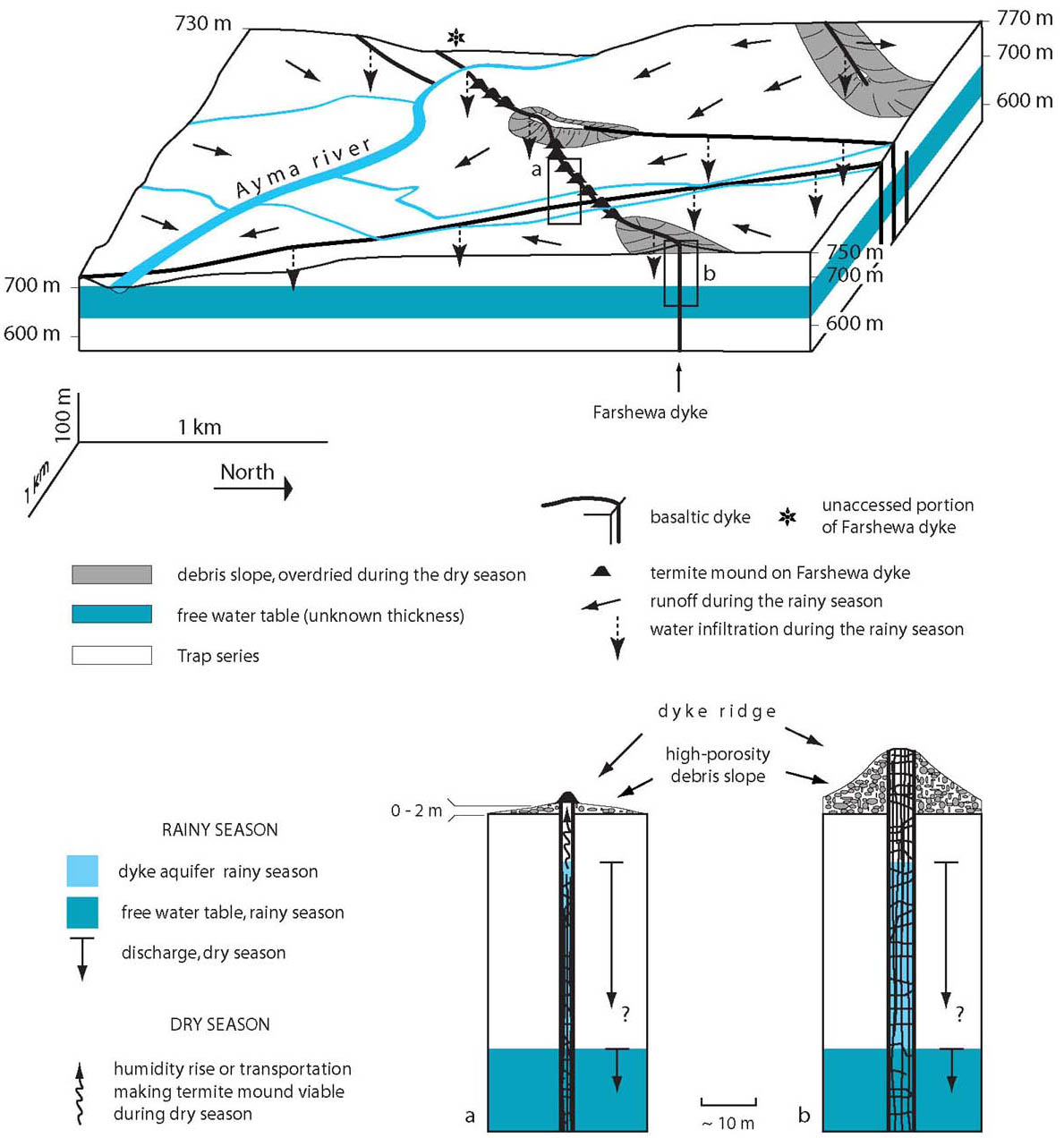
Figure 2: Hydrogeological circuit in the study area. During the rainy season, water percolates through and accumulates within the dyke fractures above the main water table (bottom, light blue). During the dry season, water is gradually released to the main water table (dark blue). Dykes having a topography higher than 2 m are surrounded by a porous debris slope that evacuates dyke moisture laterally and prevents termite settlement.
Clay availability is the critical factor that governs maximum termite
mound size, and triggers population migration from one mound to the other
by sociotomy, swarming, or migration along dyke fractures (Figure 3).
The minimum separation distance between mounds may be controlled by the
extent of the surface area covered by the trail pheromone that the termites
use to find their way back to their mound. From the rare relevant previous
works, the ~30 m half distance between adjacent mounds falls well in the
range of the maximum working distances of mound-building termites away
from their mound.
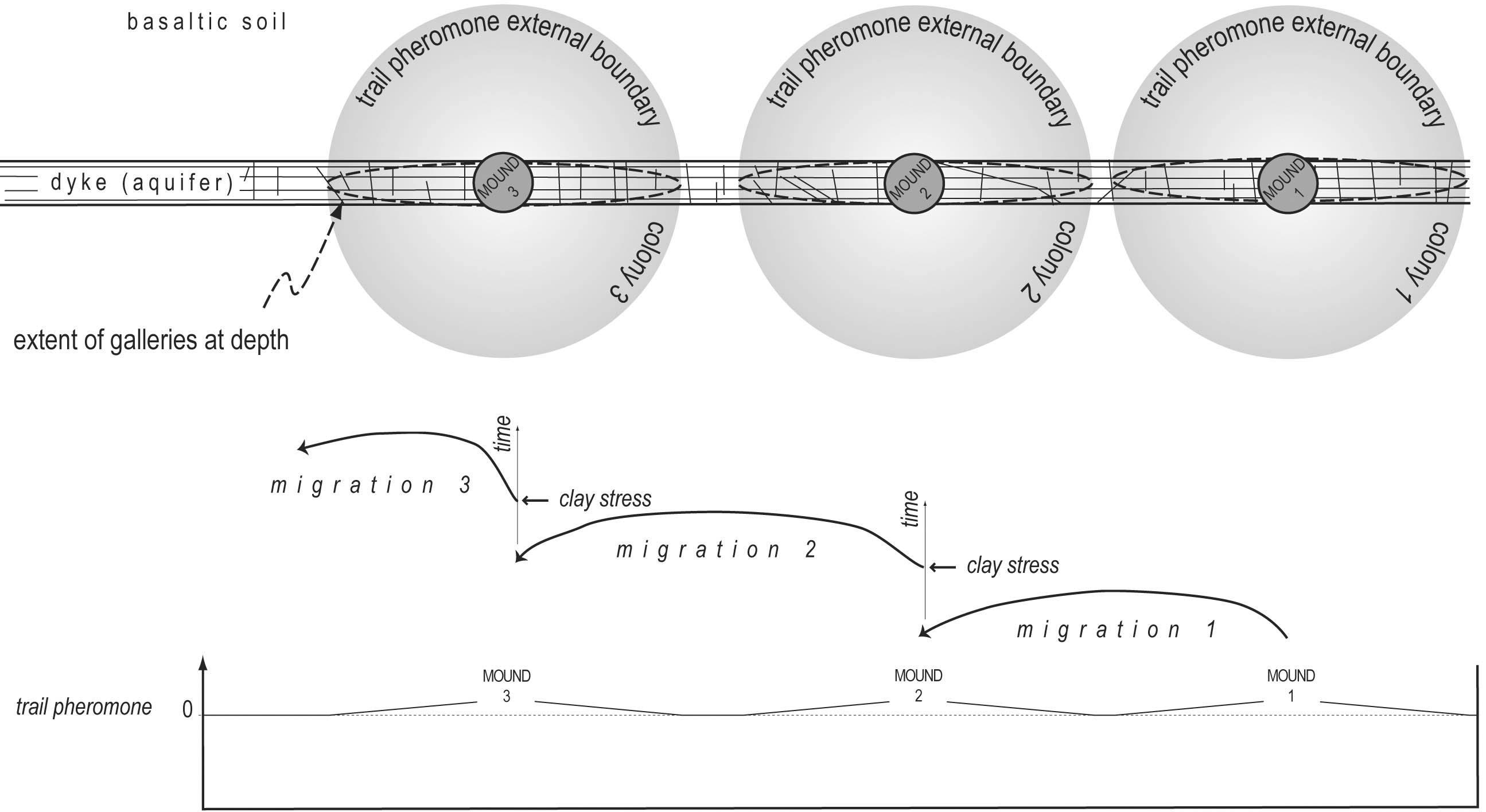
Figure 3: Migration of termite mounds with time in response to clay stress. Clay shortage triggers foundation of a new colony. The distance between two adjacent colonies is determined by the extent of the dimensions of the working area around each mound. The termites are blind and rely upon trail pheromone emissions to orientate and go back home, there is therefore a minimum distance required between adjacent mounds for each population to live without disturbance by the adjacent populations.
Methodical removal of one mound and exhumation of the first 30-50 cm of
underlying dyke blocks revealed clay coating within some of the dyke fractures,
demonstrating their use as galleries. Several horizontal dyke fractures
could also be shown to act as storage sites for grass fragments foraged
from the surface. The use of natural galleries by termites had never been
demonstrated previously. This and other issues (including determination
of species and extending observations to regional scale) are being investigated
using new data collected in October 2009.
Reference
D. Mège and T. Rango, 2009, Permanent groundwater storage in basaltic dyke fractures and termite mound viability. Journal of African Earth Sciences, doi:10.1016/j.jafrearsci.2009.07.014.

